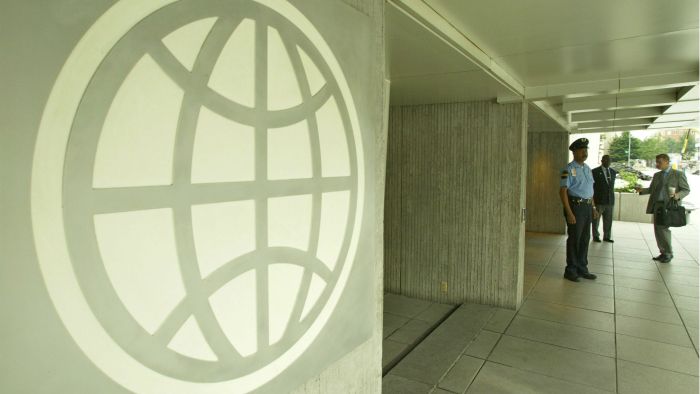
Croatia's economy will grow at nearly half the initially forecast rate, the World Bank has said, pointing to the pressure of high inflation on real wages and foreign demand in key trade partners like Germany. Pročitaj više
In 2022, Croatia’s economy is expected to grow by 6.4%, the World Bank estimates in its updated forecast for transition and developing economies in Europe and Central Asia, raising the June forecast by 2.6 percentage points.
Following recovery in 2021, Croatia’s GDP grew strongly in the first six months of 2022 owing to the post-lockdown reopening of the economy and tourism, which was facilitated by the release of dampened demand coupled with pandemic saving.
Commodity exports and domestic demand were strong as well despite increased global uncertainty and price growth, the WB says, pointing to indications that tourism could exceed the pre-pandemic levels.
Activity will probably slow down by the end of the year and that trend should extend to 2023 as well, and be reflected in the export of goods and services considering the poorer EU and global outlook.
The economy will stall due to growing uncertainty in the external environment and inflation, which will cause real wages and external demand to stall, the WB estimates.
Inflation as a brake
In 2023, Croatia’s GDP is expected to grow by merely 1.8%, nearly half the rate predicted in the World Bank’s June forecast.
In 2024, growth is expected to pick up again, to 2.6%, which is half a percentage point lower than the WB’s forecast at the start of summer.
In 2022, inflation is expected to reach 10.1%, but in 2023 it is expected to slow down to a mere 3.9%, considering the anticipated improvements in supply chains and this year’s high comparative base.
In 2024, the WB expects the growth of consumer prices to continue slowing down, to 2.3%.
The budget deficit, expressed as a share of GDP, should be 1.8% in 2022 and slide to only 1.4% in 2023, according to the WB. In 2024, it is expected to go up to 1.8%.
The debt-to-GDP ratio is estimated at 70.9% for this year. It is expected to drop to 67.7% in 2023 and to 66.1% in 2024.
Prudent policy required
In 2023, Croatia will enter the euro area and the Schengen area of passport-free movement, which is expected to strengthen its resilience and have a long-term beneficial impact on its economy.
However, an increase in the potential growth rate will continue to depend primarily on a prudent economic policy, the WB says.
The key obstacle to getting closer to the EU average is still the relatively weak productivity growth, which is attributable only to a smaller extent to the structure of the economy and relatively significant role of services requiring a low level of labour qualifications, such as tourism.
Croatia’s economy will continue to grow in the medium term as well, although at a subdued rate, the WB says.
The key challenges are connected with the implications of the war in Ukraine, notably gas imports from Russia, the decrease in real income due to growing inflation, the tightening of the monetary policy, and higher financing costs and uncertainty, the WB says, noting that the slowing down of the economy in key trade partners like Germany could negatively affect exports.
According to the World Bank, the economy of Central Europe, which also includes Croatia, is expected to grow by 4.3% in 2022, more than predicted in the WB June forecast.
Along with Croatia, Hungary, too, is expected to record a high growth rate, of 4.7%, while Romania and Poland are expected to record growth rates of 4.6% and 4% respectively.
Bulgaria is forecast to record the lowest growth, of 2.9%.
In 2023, growth will suddenly slow down due to high inflation and energy prices weakening household and corporate activity, prompting central banks to tighten their monetary policies.
Economic activity will be further slowed down by the weakening of external demand, notably by the euro area, the WB forecasts.
Romania’s economy is expected to go up the most in 2023, by 3.2%, followed by Hungary and Bulgaria, whose growth rates are forecast at 1.7%, and Poland, with a 1.6% rate.
The WB expects GDP to almost stagnate this year and in 2023 in the entire Europe and Central Asia region, which along with Central Europe also includes Eastern Europe, Western Balkans, South Caucasus, Central Asia, Turkey, Russia and Poland.
Russia’s GDP is expected to contract by 4.5% in 2022 and by 3.7% in 2023.
Ukraine’s economy is expected to shrink by 35% in 2022 due to the Russian invasion and increase by 3.3% in 2023.
In a comment on the energy crisis, the WB notes that countries that are moderately to highly dependent on imports of natural gas for heating, industry or power production will be affected the most, as will countries closely connected with EU energy markets.
Those countries must prepare for gas shortages and adopt emergency plans to alleviate the most serious consequences for households and businesses, including energy saving, better energy efficiency and energy rationing, the WB says.

Kakvo je tvoje mišljenje o ovome?
Budi prvi koji će ostaviti komentar!